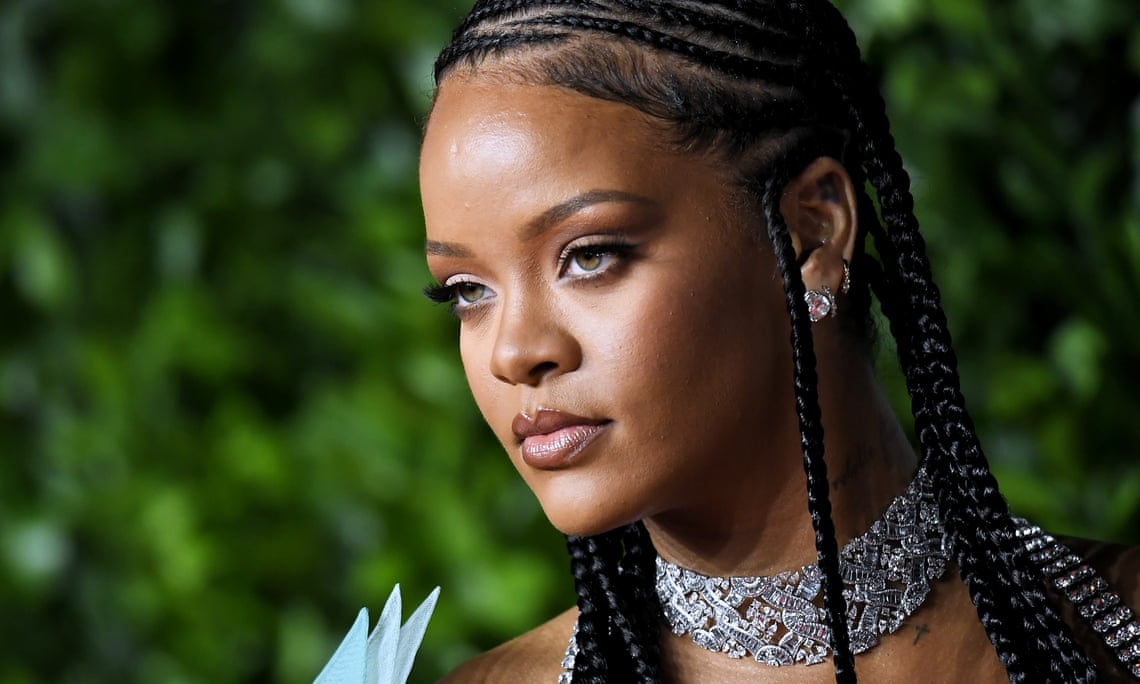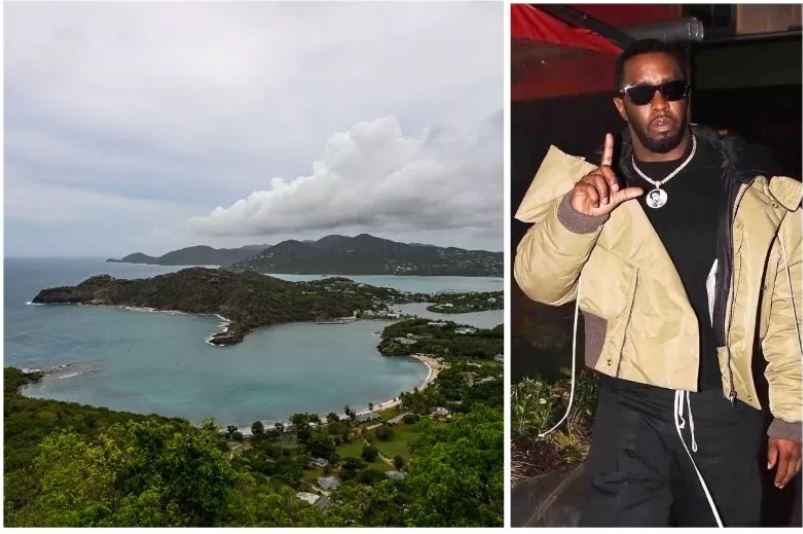Rihanna was a tiny child when she first walked in on her father smoking crack. The family struggled with poverty during her childhood in Barbados; her home life was marred by violent arguments and her father’s crippling drug and alcohol addictions. At school though, her teachers recorded that she was sure of herself, intelligent and “very observant of her environment”. By the time she was 10, Rihanna had become a carer to her two younger brothers while her mother worked to support them. Her parents later divorced.
If humble, troubled beginnings go some way to explain the drive of the most successful stars, then Rihanna makes a bold claim to be among the biggest. At 32, she enters the Sunday Times Rich list as Britain’s wealthiest female musician.
Born Robyn Rihanna Fenty, the pop megastar-turned-businesswoman has a fortune estimated at £468m. Eligible for inclusion in the newspaper’s annual list since she moved to London over a year ago, Rihanna, who enters the musicians’ category at No 3 after Andrew Lloyd Webber and Paul McCartney, is now richer than Mick Jagger and Elton John, Ed Sheeran and Adele. And, to the consternation of her fans, she hasn’t even released an album since 2016. She last did a concert tour the same year.
Her rise to the top of Britain’s elite list appears to have even shocked Robert Watts, who compiles it. “She somewhat caught us by surprise,” he told the BBC. “Very few people knew she was living in the UK until last summer; now she’s well placed to be the first musician to reach billionaire status in the UK.”
Rihanna was just 17 when her first single, Pon De Replay, became an unexpected global smash hit. (Her UK label was paying such little attention to its Caribbean signing at the time, it didn’t even bother spelling her name right on their first ever run of “Rhianna” CDs).
At 22, she became the only female artist in the history of the US Billboard chart to score four No 1 singles in a calendar year. By 24, she had won the record as the biggest-selling digital artist of all time, and at 31, Rihanna became the first black woman to run a luxury fashion house. Backed by luxury brand Louis Vuitton Moet Hennessey (LVMH), her fashion brand has been the key to building her staggering wealth. First, with the industry-disrupting launch of Fenty Beauty in 2017, the first cosmetics line to cater for up to 40 skintones, then, with Savage x Fenty, a lingerie line for all sizes.
It’s a long way from the parish of St Michael, in the south west of Barbados, where Rihanna was born. Her Guyanese mother was an immigrant and her father came from mixed-race heritage, black and white. “The Guyanese are like the Mexicans of Barbados,” she told British Vogue last month. “That’s why I really relate and empathise with Latino people who are discriminated against in America.”

Rihanna spent her early teenage years training as an army cadet. When she was 14, she formed the girl group Contrast with her friends. That summer, in 2003, the group auditioned for US music producer Evan Richards, who immediately dumped the other girls and set about making Rihanna a solo star. A meeting was arranged with Jay-Z at Def Jam records – he signed her on the spot.
In 2007, at 19 and with three albums already under her belt, Rihanna told the Observer: “They locked me into the office – til 3am. Then Jay-Z said: ‘There’s only two ways out: out the door after you sign this deal or through this window.’” Naively, perhaps, she was thrilled by the story. “We were on the 29th floor,” she said. “[It was] very flattering.” Later, she said she felt stifled by the contract she signed so young, which saw her churn out seven hit albums in seven years.
But the release of 2007’s Good Girl Gone Bad marked a creative turning point and saw Rihanna drop her label-mandated image which she deemed “girlie and boring” to experiment with “different, unexpected and edgy” looks. She moved on from reggae-flavoured dancehall and delivered Umbrella, a track that earned her the first of nine Grammys and spent 71 weeks in the UK charts, staying at No 1 for 10 of them.
“She’s now got enough incredible singles to fill five greatest hits albums, and it’s amazing she’s never released one,” says Michael Cragg, music journalist and editor of BEAT magazine. “She’s got one great album – Anti – but like Madonna, she’s made so many good singles it doesn’t matter.” Her ninth album is allegedly imminent, but then it has been for the last year.
While, professionally, Rihanna is at her peak, she has faced hardship in her private life. A year after going public about her relationship with RnB singer Chris Brown, photos of her battered face – swollen and bruised – were leaked to the press. Brown had beaten her after an argument in the car home from an awards ceremony. The couple broke up, but reconciled several times over the next four years.
In a 2009 US television interview with Diane Sawyer, Rihanna said that Brown was her “first big love”. She had been warned that her reconciliation with him would set a bad example for young girls. “I realise that my selfish decision for love could result in some getting killed,” she said. “Even if Chris never hit me again, who’s to say that [their abusers] won’t kill these girls?” In 2013, back again with Brown, she told Rolling Stone, she didn’t care what people thought : “I decided it was important for me to be happy … I wasn’t going to let anyone’s opinion get in the way of that.” Months later they broke up again.
While music has been the backbone to her creative success, her commercial skill goes far beyond singing songs. Designers including Tom Ford and Alexander Wang have been quick to heap praise on her, marking out her daring and constant reinvention. “She’s an amplified version of what a lot of girls want to look like, but she’s always one step ahead of the game,” designer Peter Dundas told British Vogue.
Critics largely agree it’s a talent that applies to her songs, too. The New Yorker, noting that her limited vocal range has never been the draw, declared in 2016 that her “real art” was “her accessible brand of casual, forward-thinking cool”. Put plainly, Rihanna excels at producing influential pop anthems that reverberate from school discos to underground clubs.
Rihanna is notorious for playing against pop machine’s rules and has cultivated a brand – the “Bad Gal Riri” of her Instagram handle – that is unapologetically sexual. She has her critics: Annie Lennox accused her of peddling “pornographic” music videos, and Mail on Sunday columnist Liz Jones called her “toxic” and “poisonous”.
“Her fans lap it up,” says Cragg. “Rihanna can be messy, get drunk, have spats on Twitter, sit on the shoulders of her bodyguard at Coachella rolling a blunt, and it’s part of her charm.
“She’s still got a real edge and you can’t market that or fabricate it in any way. She genuinely has to have really great taste to still be so relevant at this point in her career.”
By all accounts, Rihanna is supremely slick at what she does – with little sign that she’s letting up.
“I was always trying to figure out ‘how can I change the world? What could I do?’” she told the Observer in 2007. “I think the American way is a fantasy … Their priorities are fancy cars and bling. In Barbados, it’s about having fun.” (GUARDIAN)








